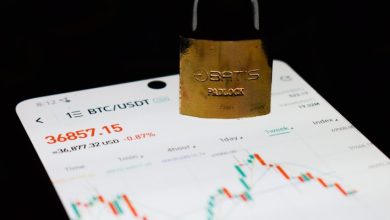How to Protect Your Crypto Assets from Phishing Attacks

- How phishing attacks target crypto assets
- Common tactics used in crypto phishing scams
- Tips for identifying phishing attempts in the crypto world
- The importance of two-factor authentication for crypto security
- How to securely store your private keys to prevent phishing
- Steps to take if you believe your crypto assets have been compromised
How phishing attacks target crypto assets
Phishing attacks targeting crypto assets are a common threat in the digital world. Cybercriminals use various tactics to trick users into revealing their sensitive information, such as private keys or login credentials, which can lead to unauthorized access to their crypto wallets. One of the most common methods used in phishing attacks is creating fake websites that mimic legitimate cryptocurrency exchanges or wallet providers. These fake websites often look identical to the real ones, making it difficult for users to distinguish between the two.
Another way cybercriminals target crypto assets is through phishing emails. These emails usually contain links to malicious websites that prompt users to enter their login credentials or private keys. In some cases, the emails may also contain attachments that, when opened, install malware on the user’s device, allowing the attacker to steal their crypto assets.
It is crucial for users to remain vigilant and cautious when interacting with any emails or websites related to their crypto assets. By following best practices, such as double-checking the URL of websites, enabling two-factor authentication, and avoiding clicking on suspicious links or attachments, users can protect themselves from falling victim to phishing attacks and safeguard their valuable crypto assets.
Common tactics used in crypto phishing scams
There are several common tactics that crypto phishing scams use to trick individuals into revealing their sensitive information. One tactic is creating fake websites that look identical to legitimate cryptocurrency exchanges or wallets. These websites will often prompt users to enter their login credentials or private keys, which are then stolen by the scammers.
Another common tactic is sending out phishing emails that appear to be from a trusted source, such as a cryptocurrency exchange or a popular wallet provider. These emails will typically contain a link that directs users to a fake website where they are asked to enter their information. Scammers may also use social media platforms to distribute these phishing emails.
Additionally, some phishing scams involve creating fake social media accounts that impersonate well-known figures in the cryptocurrency industry. These accounts will often post links to fake giveaways or investment opportunities, which are designed to lure in unsuspecting victims.
Tips for identifying phishing attempts in the crypto world
When it comes to protecting your crypto assets from phishing attacks, it is crucial to be able to identify potential threats. Here are some tips to help you recognize phishing attempts in the crypto world:
- Check the sender’s email address carefully. Phishers often use email addresses that look similar to legitimate ones but may contain subtle differences.
- Look out for urgent or threatening language in the emails. Phishing attempts often try to create a sense of urgency to prompt you to act quickly without thinking.
- Avoid clicking on any links or downloading attachments from emails that seem suspicious. These could contain malware or lead you to a phishing website.
- Double-check the website’s URL before entering any sensitive information. Phishing websites may look very similar to legitimate ones but have slight variations in the URL.
- Be cautious of unsolicited messages asking for personal or financial information. Legitimate organizations will not ask you to provide this information via email.
By staying vigilant and following these tips, you can help protect your crypto assets from falling victim to phishing attacks in the crypto world. Remember, it’s always better to be safe than sorry when it comes to safeguarding your investments.
The importance of two-factor authentication for crypto security
Implementing two-factor authentication (2FA) is crucial for enhancing the security of your crypto assets. 2FA adds an extra layer of protection beyond just a password, making it much more difficult for hackers to gain access to your accounts. By requiring users to provide a second piece of information, such as a code sent to their phone or email, 2FA significantly reduces the risk of unauthorized access.
How to securely store your private keys to prevent phishing
When it comes to protecting your crypto assets from phishing attacks, securely storing your private keys is crucial. Private keys are essentially the passwords that grant access to your cryptocurrency holdings, so keeping them safe is of utmost importance.
One effective way to prevent phishing attacks is by storing your private keys offline. This means keeping them on a hardware wallet or a paper wallet, which are not connected to the internet and therefore less vulnerable to hacking attempts.
Another option is to use a secure password manager to store your private keys. Password managers offer encryption and other security features to keep your keys safe from phishing attempts.
It’s also important to regularly update your security measures and be vigilant against phishing attempts. Be cautious of any unsolicited emails or messages asking for your private keys, and always verify the authenticity of any requests before sharing sensitive information.
By taking these precautions and securely storing your private keys, you can significantly reduce the risk of falling victim to phishing attacks and protect your crypto assets from unauthorized access.
Steps to take if you believe your crypto assets have been compromised
If you suspect that your digital currency holdings have been compromised, it is crucial to take immediate action to protect your assets and limit any potential losses. Here are some steps you can take:
- First, **disconnect** your device from the internet to prevent any further unauthorized access to your accounts.
- Next, **contact** your cryptocurrency exchange or wallet provider to report the incident and request assistance in securing your account.
- Change your account passwords and enable two-factor authentication to add an extra layer of security to your accounts.
- Review your transaction history to identify any unauthorized transfers or suspicious activity. **Report** these to your exchange or wallet provider immediately.
- If you believe your private keys have been compromised, transfer your funds to a new wallet with a new set of keys to prevent any further unauthorized access.
- Consider **reporting** the incident to the relevant authorities, such as your local law enforcement agency or a financial regulatory body, to help prevent similar attacks in the future.
By taking these steps promptly and decisively, you can help safeguard your crypto assets and mitigate any potential damage caused by phishing attacks. Remember to stay vigilant and proactive in protecting your investments in the ever-evolving landscape of digital currency security.



